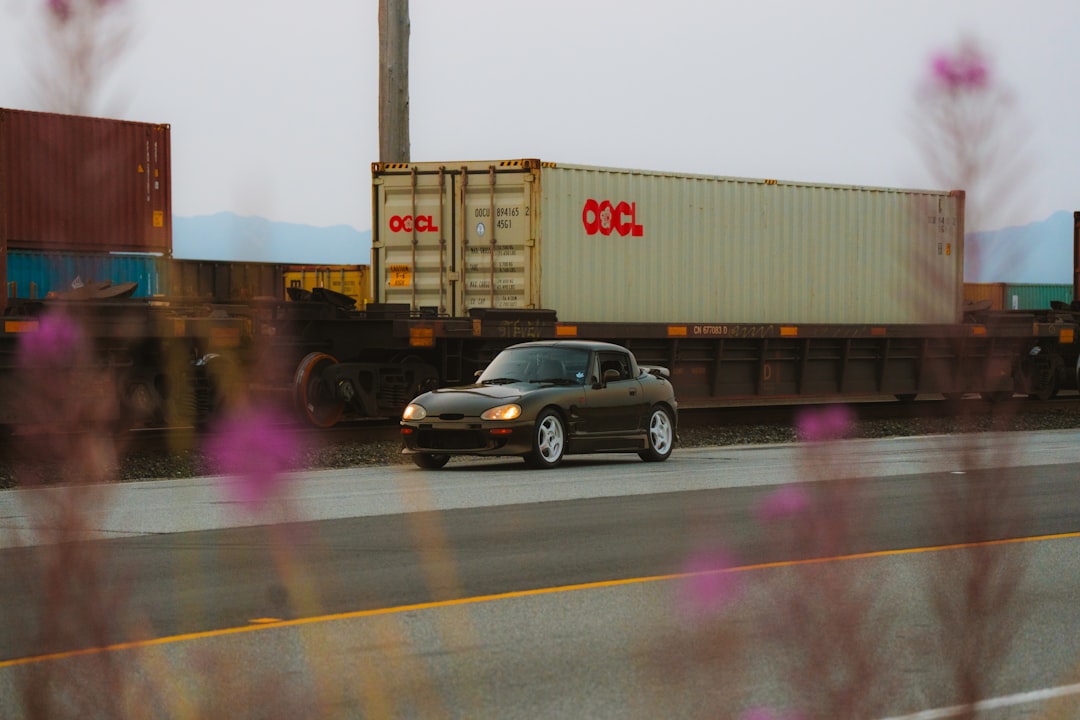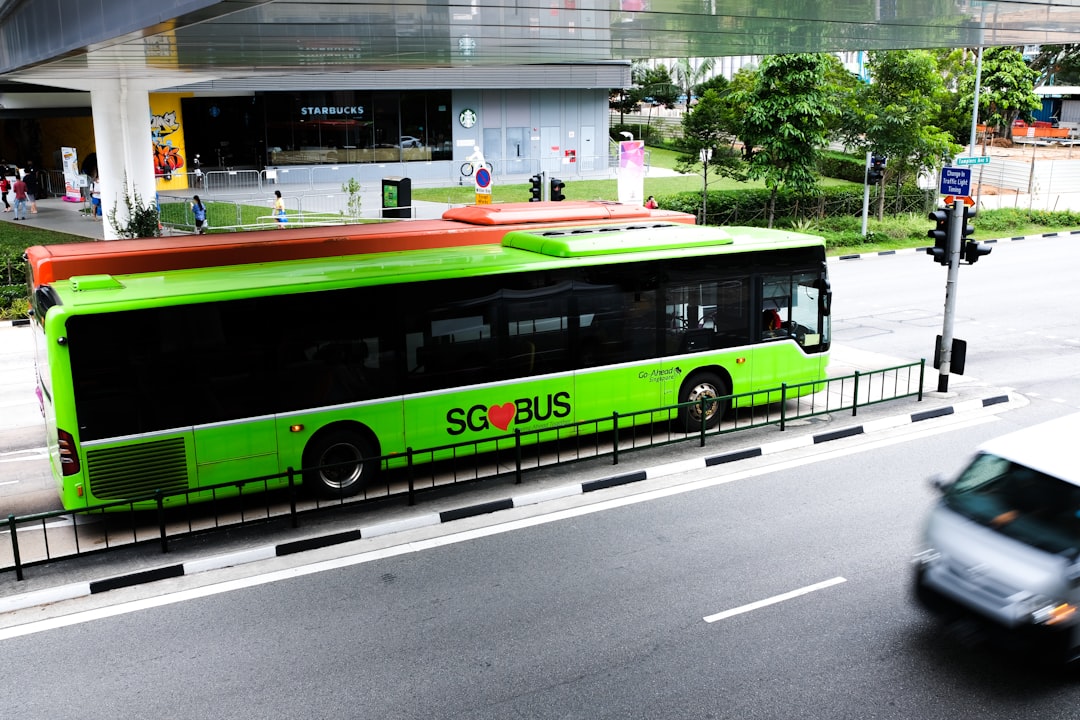

Engage prospects with a scan and streamline customer engagement with FREE QR code marketing tools by Sona – no strings attached!
Create a Free QR CodeFree consultation

No commitment

Engage prospects with a scan and streamline customer engagement with FREE QR code marketing tools by Sona – no strings attached!
Create a Free QR CodeFree consultation

No commitment
Auto transportation services face mounting pressure to deliver modern and seamless customer engagement as the industry transitions into a digitally connected world. A persistent challenge arises when high-value prospects slip through the cracks if their interactions are not immediately tracked or captured, especially with outdated methods like paper forms, printed brochures, and manual appointment scheduling. This often leads to lost opportunities, incomplete data, and friction between offline marketing and online conversions.
As customers expect immediate access to quotes, booking, and vehicle details, closing the gap between physical and digital engagement becomes critical for growth-focused transportation businesses. Traditional approaches often leave teams with limited visibility into anonymous traffic. Visitors may research your services or interact with your brand without submitting a form, making it difficult to identify true intent or connect high-fit prospects to your CRM. This delay in outreach not only risks competitors engaging first but also causes missed opportunities for upsell or account expansion if key signals are not surfaced.
QR codes have emerged as a flexible and cost-effective tool to link every physical touchpoint, such as vehicle decals, service kiosks, direct mailers, and event signage, to instant digital actions. Whether powering vehicle QR code marketing or contactless ticketing, these codes allow prospects to scan from a truck, flyer, or ad and move directly to a mobile form or booking platform, enabling immediate action at the moment of highest intent. Used strategically, QR codes accelerate conversions and, when paired with robust tracking, help tie offline engagement to online results for auto transportation services.

Bridging the divide between physical touchpoints and timely digital lead capture is a top challenge for auto transportation firms. Relying on static signage, business cards, and in-person forms often results in incomplete records and delayed follow-up, which makes it easy to miss high-value prospects, especially those researching services anonymously or after hours. QR code programs turn every surface into a conversion opportunity by enabling scans that route to frictionless forms, quotes, and booking flows like google forms QR.
Industry leaders now turn to QR-powered solutions at every customer-facing asset. The goal is not simply to replace paper with pixels but to create a measurable, repeatable system that captures intent and triggers action in real time. When designed with intent and deployed where prospects already pay attention, QR codes can double as both a lead capture device and a data signal that fuels smart remarketing and sales prioritization.
Today’s advanced QR platforms make it possible to deploy quickly, update destinations without reprinting, and centralize reporting. The result is a dependable system that turns offline interest into digital action while preserving the data you need for better targeting and faster sales cycles.

Auto transportation firms often struggle to connect physical brand presence with measurable digital outcomes. Prospects notice trucks, yard signage, or mailers, then research silently on their phones without leaving a trace. By the time they are ready to engage, they may have selected a competitor. The gap between offline attention and online action has direct consequences on pipeline creation and ROI.
QR codes solve this challenge by turning every impression into an opportunity to act immediately. One scan can trigger booking, a quote request, or cargo tracking without needing an app. That immediacy is especially valuable in transportation, where buyers range from consumers moving a single vehicle to logistics managers coordinating multi-vehicle shipments under tight timelines. A fast path to action increases win rates and shortens cycles.
By embedding QR codes on wraps, appointment cards, shipping documents, brochures, and out-of-home media, transportation firms can capture interest at the source and route it into fast, mobile-first experiences that deliver results.

Not all QR codes are the same. The best format depends on the action you want scanners to take and the data you need to collect. In auto transportation, where timing and clarity drive conversions, a well-matched format reduces friction and improves follow-through.
The right format also impacts the richness of your analytics. Dynamic codes, for example, enable mid-campaign updates and deeper reporting, while specific formats like SMS or email pre-populate messages so prospects can contact dispatch or sales with a single tap. For on-site experiences such as depot check-in or driver onboarding, Wi-Fi and app download codes can remove technology hurdles that slow down operations.
Selecting formats aligned with a specific moment of intent increases the chance that scanners complete the next step. For example, put a web link code to instant quotes on vehicle doors, a vCard on dispatch counters, and an SMS trigger beside service kiosks to fast-track high-priority requests.

Auto transportation services routinely encounter moments where people engage but leave no digital footprint. A fleet trailer parks near a busy venue, a trade show attendee lingers at your booth, or a shipper scans the shipping paperwork for details but never fills a form. QR codes transform these moments by providing clear calls to action and capturing scan data that identifies where your best leads originate.
The key is to match placement to intent. Think about where prospects make decisions or need information quickly. Each placement can use a unique code so you can differentiate between drive-by interest, in-depot inquiries, and post-sale engagement. Over time, you will see which placements generate high-quality leads and which are more suited for education.
By analyzing scan behavior, geo, and time patterns, you can identify where the highest-intent audiences interact with your brand and double down on those placements while testing new ones systematically.

Transportation buyers want clarity and speed. They need quotes without phone tag, real-time updates, and simple paths to book or request help. QR codes support these needs by creating clear on-ramps from physical assets to digital workflows. When you map codes to common customer interactions, you significantly reduce friction and improve conversion likelihood.
Below are three high-impact applications that work across consumer and commercial transportation segments. Each example pairs a moment of interest with a mobile-first action that can be tracked, measured, and optimized over time.
These use cases make physical assets measurable and actionable. Over time, you can benchmark scan-to-form completion, quote-to-booking rate, and average response time to identify the combinations of placement and message that produce the best revenue outcomes.
Every QR scan contains intent: where someone was, what they scanned, and when they scanned it. With the right setup, that intent can be translated into audience segments for email, SMS, and paid media retargeting. In transportation, this helps you distinguish among individual vehicle shippers, dealership and auction partners, and enterprise logistics buyers so each group receives appropriate messaging. See Sona’s retargeting playbook for a step-by-step approach.
The secret is to assign meaning to every code. Use separate codes for top-of-funnel awareness versus bottom-of-funnel actions, and tag by channel, time, and content. Then sync these segments to your CRM and ad platforms for automated follow-up. As segments grow, you can test different offers and timing to lift conversion rates across the funnel.
With platforms like Sona QR, you can centralize this tagging and segmentation, then pass clean data to downstream systems. The payoff is a retargeting engine that responds to real behavior instead of broad assumptions.
QR codes should not sit on an island. They play best as connectors across your offline and digital channels, ensuring consistent experiences and accountable results. In auto transportation, the same prospect might see a truck on the road, encounter a booth at a trade show, and receive a follow-up mailer. QR codes create continuity, allowing you to recognize that pattern and tailor outreach accordingly.
Integration is also about timing. A scan during a trade show keynote calls for rapid follow-up, while a scan from shipping paperwork might trigger a service education series. Map scan types to specific workflows so that each entry point has a downstream journey and a clear conversion goal.
Tying QR analytics to your CRM closes the loop. You can see that a person scanned at a trade show, later viewed a rate sheet via direct mail, and then booked a call. That full picture enables better forecasting and more confident budget allocations.
Ad hoc QR deployments often lead to inconsistent performance, missing data, and slow follow-up. A structured approach ensures every code has a purpose, every scan is captured, and every action aligns with a business outcome. The checklist below provides a repeatable framework that your team can use across vehicle wraps, documents, events, and media.
Before you begin, confirm your primary objective. Are you trying to increase quote requests, shorten response times, improve tracking engagement, or attribute out-of-home spend more accurately? Goals inform format, placement, and measurement, and they keep creative decisions focused on outcomes rather than opinions.
Clarify what success looks like for this campaign. For example, capture previously anonymous, high-intent leads from fleet decals at truck stops and along dealer routes. Translate that into measurable KPIs such as number of scans, scan-to-form completion rate, and time from scan to first response.
Select the format that best supports your goal. In most marketing situations, dynamic codes are preferred since they allow editing and provide analytics without reprinting. Static codes are best for permanent, non-changing destinations such as a generic brochure PDF.
Design for visibility and clarity. Use brand colors, a logo, and a contrasting frame so the code stands out in real-world environments. Pair every code with a benefit-driven CTA such as Scan to get your price in 60 seconds.
Place codes on high-traffic, high-intent assets. On vehicles, prioritize door panels, tailgates, and windows. In facilities, use counters, waiting areas, and exits. At events, integrate on booth structures, demo vehicles, and staff badges.
Monitor scan volume, completion rates, and revenue outcomes. Map results by placement, time, and audience. Identify bottlenecks such as drop-off on the second form step or slow follow-up times.
Following this checklist ensures you standardize execution, collect reliable data, and turn insights into action across campaigns. Over time, the system becomes more accurate and efficient, making QR a dependable growth channel rather than a one-off tactic.
A major pain point for auto transportation marketers is connecting offline engagements to business outcomes. Without end-to-end visibility, it is difficult to justify spend on vehicle wraps or billboards, allocate staff at events, or tailor offers by region. Advanced tracking solves this by capturing scans, enriching contacts, and attributing revenue back to the codes and placements that influenced the deal.
With the right setup, a scan becomes the first touch in a multi-step journey you can see and optimize. You can identify how many quotes originated from fleet decals, which event sessions produced booked demos, or how many tracking scans correlated with upsell acceptance. These insights inform budget and resource allocation in a way that guesswork never could.
When analytics connect scans to revenue, QR programs graduate from tactical experiments to strategic growth drivers. Teams can confidently scale what works and sunset what does not, ensuring steady gains in pipeline quality and marketing efficiency.
Long-term success with QR codes requires more than printing stickers. It depends on operational discipline, automation, and staff enablement. When field teams understand the why behind QR usage and when systems automate the next best action after a scan, results compound.
Start by aligning QR deployments to the most common customer journeys in your business. Then build playbooks for follow-up and create feedback loops to refine placements, messages, and offers. A small set of best practices can significantly lift scan rates and conversion.
These practices, supported by a central platform like Sona QR for code management and analytics, help you maintain clean data, react to engagement in real time, and deliver a consistent, high-quality customer experience.
Choosing the right QR platform is a strategic decision. Transportation firms need more than basic code generation. You need security, dynamic editing, analytics, and integrations that fit your go-to-market stack and operational realities. The wrong vendor can lead to untracked scans, compliance risks, and campaign stagnation.
Evaluate providers against criteria that reflect your use cases and maturity. Prioritize platforms that are simple for field teams, powerful for marketers, and flexible for IT. Ask about uptime, data retention, and service level agreements, and request references from logistics or transportation customers if possible.
Providers like Sona QR combine these capabilities with identity resolution and multi-touch attribution through Sona, helping teams connect the dots from scan to revenue. The best choice is the one that fits your workflows today and scales as your program grows.
Early adopters offer a glimpse of what is possible when QR codes are deployed intentionally. A mid-sized vehicle carrier added dynamic codes to fleet signage and shipping documents. Within one quarter, the team recorded a 27 percent increase in qualified quote submissions and a 15 percent reduction in response time due to automated routing and alerts. Because each code was tied to a placement, they discovered that tailgate decals and cargo slip codes produced the highest conversion to booked loads, prompting a reallocation of spend.
Another transporter used event-specific QR codes at auto auctions and trade shows. Scans routed to micro-landing pages that matched the venue and promotion. Leads were auto-tagged by event and product interest in the CRM. The company saw a significant lift in same-week demo bookings and more accurate attribution to event investments. This visibility allowed them to scale attendance at the most productive shows and sunset others.
Experts point to several trends shaping the next phase of QR in transportation. More firms are embedding QR codes into vehicles and parts for warranty management, service verification, and post-sale upselling. Codes on driver uniforms and ID badges streamline safety checks and contact sharing. Smart signage with dynamic routing personalizes destinations by time of day, geolocation, or weather conditions. As identity resolution and data clean rooms become more accessible, QR scans will connect more reliably to known accounts, improving account-based marketing and expansion strategies.
Looking ahead, the winners will be those who treat QR codes not as a novelty but as an operating system for offline-to-online engagement. Vehicles, shipping documents, uniforms, and signage become the physical interface to digital workflows. With platforms like Sona QR managing codes and analytics, and Sona.com unifying touchpoints for attribution, transportation marketers can automate lead enrichment, segment audiences by real behavior, and measure revenue impact by placement. The outcome is a faster, more connected customer journey and a growth engine that captures demand at the exact moment it appears. Start creating QR codes for free.
QR codes have transformed auto transportation services from traditional, manual lead capture methods into dynamic, measurable customer acquisition channels. By integrating QR codes into your marketing materials and fleet assets, you can effortlessly capture qualified leads, enhance customer interactions, and streamline the inquiry process—turning every scan into a valuable business opportunity. Imagine instantly knowing which outreach efforts attract the most clients and being able to optimize your campaigns on the fly.
With Sona QR, creating dynamic, trackable QR codes tailored to the auto transportation industry is simple and efficient. Update your campaigns in real-time without costly reprints, connect every scan to actionable data, and watch as your lead generation and customer engagement soar. Start for free with Sona QR today and transform every scan into your next loyal customer.
QR codes link physical touchpoints to instant digital actions such as mobile forms, quotes, and booking platforms, enabling immediate customer engagement and reducing missed leads and manual errors.
QR codes provide cost-effective, trackable, and dynamic connections from offline assets to online conversions, improve data quality, accelerate response times, and enable measurable lead capture and attribution.
QR codes turn every physical asset into a conversion opportunity by routing scans to frictionless lead forms, instant quote requests, or scheduling pages, capturing intent in real time and feeding data into CRM systems.
Innovative uses include placing QR codes on vehicle wraps, shipping documents, event badges, driver uniforms, and direct mail flyers to facilitate instant quotes, vehicle tracking, event engagement, and customer self-service.
QR codes provide fast, app-free access to quotes, bookings, shipment tracking, and contact information, reducing friction and delivering seamless, mobile-first experiences aligned with customer intent.
Use Sona QR's trackable codes to improve customer acquisition and engagement today.
Create Your FREE Trackable QR Code in SecondsJoin results-focused teams combining Sona Platform automation with advanced Google Ads strategies to scale lead generation

Connect your existing CRM

Free Account Enrichment

No setup fees
No commitment required

Free consultation

Get a custom Google Ads roadmap for your business






Launch campaigns that generate qualified leads in 30 days or less.
